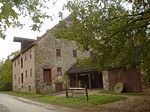KYW (AM)

KYW (1060 kHz) is a commercial AM radio station licensed to serve Philadelphia, Pennsylvania. It is one of the oldest continuously operating radio stations in the United States, originating in Chicago before moving to Philadelphia in 1934. KYW's unusual history includes its call sign of only three letters, beginning with a K, rare for a station in the Eastern United States. It broadcasts an all-news radio format and is branded as "KYW Newsradio". KYW serves as the flagship station of Audacy, Inc. KYW's studios are co-located within Audacy's corporate headquarters in Center City Philadelphia and its transmitter and two-tower directional antenna array are located in Lafayette Hill. KYW is a 50,000–watt Class A clear channel station. With a good radio receiver, its nighttime signal can be heard in much of the Eastern United States and Eastern Canada, however, it restricts its signal towards the Southwest United States to protect XECPAE-AM in Mexico City, which shares Class A status on AM 1060. The station's signal is restricted towards the Northeast United States to protect the signal of WEPN in New York City, which is a different 50,000–watt station that is only one frequency away at AM 1050. KYW Newsradio's programming is also available via a simulcast on sister station 103.9 WPHI-FM and the HD2 subchannel of sister station 94.1 WIP-FM.
Excerpt from the Wikipedia article KYW (AM) (License: CC BY-SA 3.0, Authors, Images).KYW (AM)
Joshua Road,
Geographical coordinates (GPS) Address Nearby Places Show on map
Geographical coordinates (GPS)
| Latitude | Longitude |
|---|---|
| N 40.103444444444 ° | E -75.248511111111 ° |
Address
KYW-AM (Philadelphia) Tower 1
Joshua Road
19034
Pennsylvania, United States
Open on Google Maps








